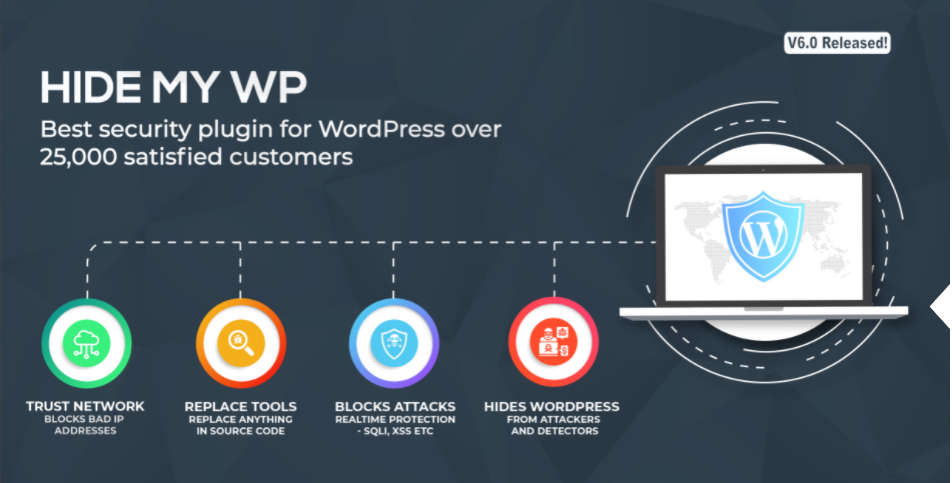People all around the world use WordPress to make their websites without any coding knowledge. However, it is crucial to learn the downsides of it to make the best out of WordPress. We must be aware of all types of WordPress security vulnerabilities like an XPath injection vulnerability to protect the efforts made on these websites.
But this is a vast subject, and that is why we must research it all on the internet. There are many injection attacks, of which we will be discussing XPath injection attacks in this article.
There are several unanswered questions like what is an injection attack and what is blind XPath injection? Continue reading to find out the answers.
Injection Attacks

An injection attack is one of the many methods a hacker uses to get access to a website. This injection attack method involves the addition of untrusted code to a vulnerable computer program. Examples of this type of attack are SQL injection attacks, XPath injection attacks, cross-site scripting(XSS), etc.
What Is An XPath Injection Attack?
Similar to SQL injection attacks, XPath injection attacks happen when a website uses the information inputted by the users. An XPath injection attack allows a hacker to enter malicious code into a website, resulting in the exposure of sensitive and confidential resources or information like the content of an XML document.
Users used to prefer relational databases for a long time, but as time moved on, the popularity of using XML to store data has increased. XPath is a query language used to locate any specific elements in an XML document.
However, we can access any part of this document using an XPath query because any user restrictions are not available, giving an advantage to attackers.
Let us consider an example:
Suppose we use login authentication in a website, and the login credentials( usernames and passwords) are stored using XML. The following is the XML document:
<?xml version=”1.0" encoding="utf-8"?> <Employees> <Employee ID="1"> <Name>Jacob</Name> <UserName>Harry</UserName> <Password>Supposed to be secret</Password> </Employee> <Employee ID="2"> <Name>Tanner</Name> <UserName>Ben</UserName> <Password>a secret again</Password> </Employee> </Employees>
When the user enters the username and password, the XPath query generated is:
"//Employee[UserName/text()='" & Request("UserName") & "' And Password/text()='" & Request("Password") & "']"
However, if a hacker enters a malicious XPath injection payload in place of the login credentials, the XML query generated is as follows:
Username : xyz' or 1=1 or 'a'='a
Password: xyz
XPath Query:
//Employee[UserName/text()='test' or 1=1 or 'a'='a' And Password/text()='xyz']
This is equivalent to:
//Employee[(UserName/text()='test' or 1=1) or ('a'='a' And Password/text()='xyz')]
In this case, only the first part of the XPath becomes true and the username matches all employees because of the 1=1 condition. However, the second part becomes irrelevant and passwords get neglected. This allows everyone to access the website.
Similarly, we can obtain an entire XML document by Boolenization and XML crawling, known as Blind XML crawling.
Boolenization
A hacker uses a Boolenization method to check if the XPath input string is True or False. Let us continue with the login authentication example.
A successful login attempt returns True while an unsuccessful one returns False. The hacker focuses on checking each character in the character range to which the string belongs.
XML crawling
With XML crawling, a hacker may use the following to know the XML document structure:
- count(expression)
- string-length(string)
- substring(string, number, number)
This knowledge eventually leads the hacker to access all information in your XML document.
How To Prevent XPath Injection Attacks:
Since XPath injections are similar to SQL injection attacks, the preventive methods to both of them are alike:
Input Validation:
We must ensure that certain characters are restricted where only valid input per the restrictions is accepted. For example, for a query field that requires age, only numbers are permitted.
Other characters like letters and symbols will be considered invalid.
Parameterization:
Parameterizations make the database differentiate between user inputs and commands. It precompiles the queries which define the user input as a parameter rather than a command expression.
Error pages:
We must use a proper error page that helps not disclose any information that might be advantageous to a hacker.
Hide My WP:
Hide My WP is an advanced WordPress security plugin that helps protect your website. It has a default Firewall that blocks any lethal attacks like XPath injection attacks, SQL injection attacks, XSS, and brute force attacks.
Not only does it protect from injection attacks, but it can be helpful in the following ways too:

- It will hide your WordPress.
- It will auto-detect attacks and block them.
- It can rename plugin and theme folders.
- It hides your WordPress from theme and plugin detectors.
- It can protect your WordPress from unknown hackers or bots via a Trust Network.
- It includes an anti-spam functionality.
- It allows you to restrict and permit visitors from specific countries.
- It protects from all kinds of new attack patterns.
- It sends you details like the attack value(How they hack you?), Impact(how dangerous is it?), Attacked page(which plugin did they use?) and their IP addresses.
- It can disable directory listings.
- It creates a dynamic list of Bad IP addresses for future references.
- It helps minify HTML and CSS.
Summing It Up:
- It is vital to reduce the WordPress security vulnerabilities to protect your website’s privacy. And to prevent hackers from snooping into your website.
- Injection attacks are well-known methods of attacks that hackers use to gain access to your WordPress. Few examples include XPath injection attack, SQL injection attack, and XSS.
- XPath injection attacks, like SQLi attacks, target the confidential information of a website by entering malicious code in entry fields.
- XPath is a query language that helps locate any specific element in an XML document.
- The method used to obtain an entire XML document by Boolenization and XML crawling is known as Blind XML crawling.
- We can prevent XPath injection attacks by
- Input Validation
- Parameterization
- having a proper error page
- using WordPress security plugins like ‘Hide My WP.’
